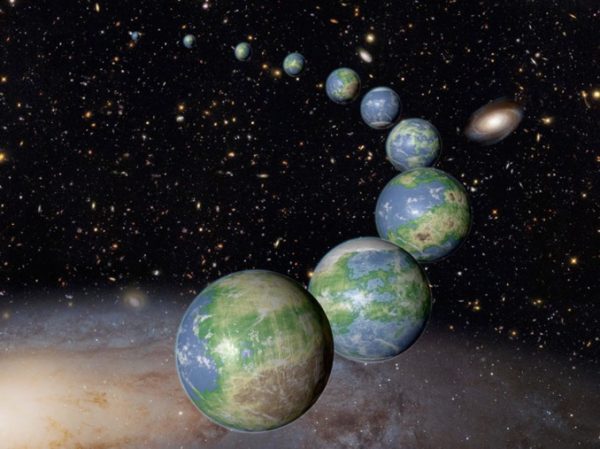Earth’s chemical fingerprint could help identify habitable exoplanets – Astronomy Now Online

Canadian astronomers at McGill University, using satellite data collected over the past decade, have come up with a spectral “fingerprint” of Earth that could be compared to atmospheric signatures from exoplanet transits to help determine their ability to support life.
The infrared transit spectrum shows the presence of key molecules in Earth’s atmosphere that presumably would be present in any viable biosphere, including the simultaneous presence of ozone and methane, which would only be expected from organic sources.
“A handful of researchers have tried to simulate Earth’s transit spectrum, but this is the first empirical infrared transit spectrum of Earth,” said Nicolas Cowan, who supervised the research carried out by McGill physics student Evelyn Macdonald. “This is what alien astronomers would see if they observed a transit of Earth.”
The study was published in the journal Monthly Notices of the Royal Astronomical Society. It was based on data from the Canadian Space Agency’s SCISAT, a satellite built to study Earth’s ozone layer by monitoring how sunlight passing through the atmosphere is affected by the suspended particles it passes through.
Transiting exoplanets pass in front of their host stars as viewed from Earth. By carefully monitoring the spectra of starlight passing through the atmosphere of an exoplanet, astronomers can, in theory, identify specific elements.
NASA’s James Webb Space Telescope will be sensitive enough to detect carbon dioxide and water vapour in the atmospheres of relatively nearby exoplanets like those in the TRAPPIST-1 system some 40 light years from Earth. The telescope may even be able to detect methane and ozone given enough time, making the system a good target to compare with Earth’s spectral fingerprint.
“TRAPPIST-1 is a nearby red dwarf star, which makes its planets excellent targets for transit spectroscopy,” said Macdonald. “Also, these planets orbit close to the star, so they transit every few days. Of course, even if one of the planets harbours life, we don’t expect its atmosphere to be identical to Earth’s since the star is so different from the Sun.”





